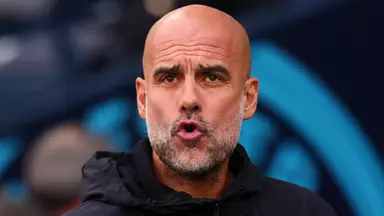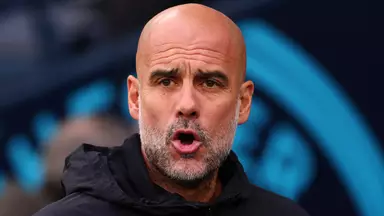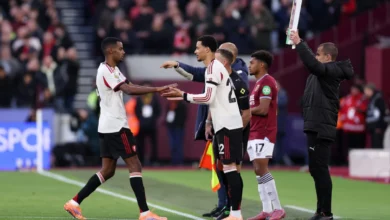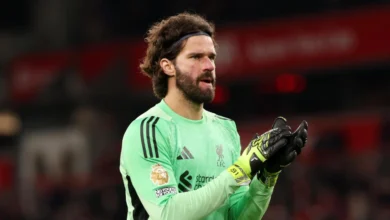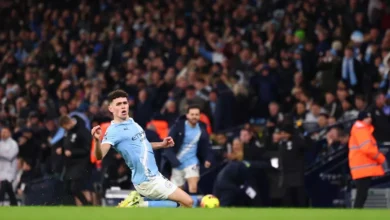The 12 players waving goodbye to Tottenham today as Thomas Frank summer transfer plan begins
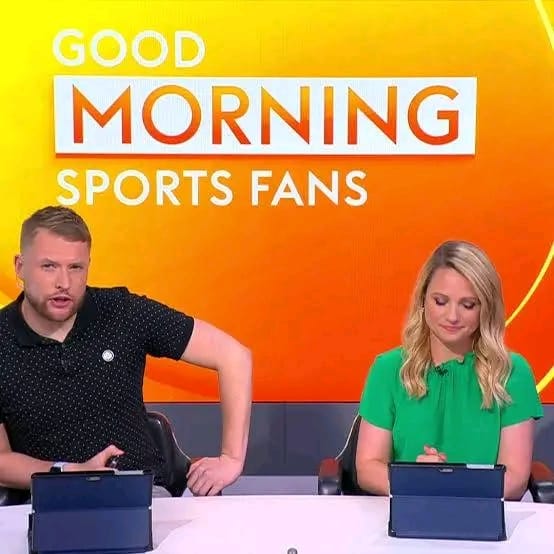
June 30th, 2025, marks the end of an era for twelve Tottenham Hotspur players as their contracts officially expire, bringing their association with the North London club to a close. This significant exodus represents one of the most substantial clearouts in recent memory for Spurs, as the club prepares for a new chapter under the continued guidance of their management team while simultaneously addressing the strategic vision that has been taking shape over recent months
The football industry operates on a unique calendar system where player contracts traditionally run from July 1st to June 30th of the following year. This means that today, June 30th, 2025, represents the final 24 hours of employment for these twelve individuals who have worn the famous white shirt of Tottenham Hotspur. The timing is particularly poignant as it coincides with the summer transfer window’s opening, creating both opportunities and challenges for all parties involved.
This mass departure was not unexpected, having been officially confirmed earlier in June when Tottenham released their annual retained and released list. Such lists are standard practice across English football, providing clarity for players, agents, and other clubs about who will be available as free agents when the transfer window opens. The transparency of this process, while sometimes harsh in its finality, allows for proper planning and prevents the uncertainty that could otherwise plague both players and clubs during the crucial summer period.
Perhaps the most notable departure among the twelve is that of Sergio Reguilón, the Spanish left-back whose journey at Tottenham has been emblematic of both the club’s ambitions and its inconsistencies over recent years. Reguilón’s arrival in North London during the summer of 2020 was met with considerable excitement, as Spurs secured his services for £27.5 million from Real Madrid, one of Europe’s most successful clubs.
The signing came at a time when Tottenham were making significant moves in the transfer market, coinciding with the high-profile return of Gareth Bale on loan from the same Real Madrid. The Welsh wizard’s homecoming dominated headlines, but Reguilón’s acquisition was equally significant from a tactical perspective, as then-manager José Mourinho sought to add pace and attacking threat from the left flank.
Reguilón’s credentials were impressive. He had just completed an outstanding loan spell with Sevilla, where he had played a crucial role in their Europa League triumph. His performances in that competition, particularly in the final against Inter Milan, showcased his ability to contribute at the highest level of European football. The defender’s pace, crossing ability, and tactical intelligence made him an attractive proposition for Tottenham, who had been seeking to strengthen their defensive options.
During his time at Spurs, Reguilón made 56 appearances across all competitions, a respectable tally that nonetheless tells a story of fluctuating fortunes. Initially, he established himself as the first-choice left-back, bringing an attacking dimension that the team had previously lacked from that position. His ability to surge forward and deliver dangerous crosses into the penalty area added a new tactical element to Tottenham’s play, particularly in matches where they faced defensively organized opponents.
However, football careers are rarely linear, and Reguilón’s trajectory at Tottenham became increasingly complicated as time progressed. Changes in management, tactical systems, and the emergence of alternative options gradually saw him fall down the pecking order. The Spaniard found himself increasingly marginalized, struggling to regain the confidence of successive head coaches despite his obvious technical abilities.
The most telling statistic of Reguilón’s decline in prominence was his complete absence from Tottenham’s Europa League campaign in what proved to be his final season with the club. For a player who had excelled in European competition with Sevilla, this exclusion was particularly stark and symbolic of how far he had fallen from favor. The Europa League, a competition where squad rotation is common and opportunities for fringe players are typically more abundant, saw Reguilón fail to register even a single minute of playing time.
Fraser Forster’s departure represents the end of a different type of Tottenham story. The experienced goalkeeper joined the club three years ago with a clear understanding of his role as the backup to the first-choice keeper. At 37 years of age, Forster brought vast experience and professionalism to the goalkeeping department, having previously enjoyed successful spells with Southampton and Celtic.
Forster’s contribution to Tottenham cannot be measured solely in terms of appearances or saves made. His role as the secondary goalkeeper required a particular type of mentality – one that demands constant readiness despite limited opportunities. Throughout his three-year stint, Forster maintained exceptional standards in training and provided crucial competition for the number one spot, pushing his colleagues to maintain their own high levels of performance.
The veteran goalkeeper’s experience proved invaluable during cup competitions and in situations where the first-choice keeper was unavailable through injury or suspension. His calm presence and shot-stopping ability, honed over years of top-level football, provided reassurance whenever called upon. Forster’s professionalism and positive attitude made him a respected figure within the dressing room, offering guidance to younger players and maintaining team morale during challenging periods.
At this stage of his career, Forster’s departure opens questions about his future plans. Whether he will seek another opportunity in professional football or consider retirement remains to be seen, but his contribution to Tottenham’s goalkeeping department over the past three years has been consistently professional and reliable.
Perhaps the most poignant departure is that of Alfie Whiteman, whose ten-year association with Tottenham comes to an end without him ever having made a first-team appearance. Whiteman’s story is representative of the thousands of young players who dedicate their formative years to professional football clubs, working tirelessly in pursuit of their dreams while knowing that the odds of reaching the highest level are incredibly challenging.
Whiteman joined Tottenham’s academy system as a teenager, progressing through the various youth levels while developing his skills as a goalkeeper. Over the course of a decade, he would have trained alongside numerous players who went on to achieve first-team success, while also witnessing others fall by the wayside. His persistence and dedication to remain with the club for such an extended period speaks to both his commitment and the faith that coaching staff had in his potential.
The goalkeeper’s decade-long journey at Tottenham would have included loan spells at lower-league clubs, designed to provide him with competitive experience and exposure to senior football. These temporary moves are crucial for young players’ development, offering them the opportunity to test themselves against seasoned professionals while adapting to the physical and mental demands of regular first-team football.
While Whiteman never achieved his ultimate goal of representing Tottenham’s first team, his experience and the relationships he built during his time at the club will serve him well as he seeks new opportunities. At 24 years of age, he still has time to establish himself as a professional goalkeeper elsewhere, armed with the technical and tactical knowledge gained from a decade within one of England’s premier football academies.
Among the younger players departing is Max Robson, whose emotional farewell message on Instagram provided a glimpse into the human side of football’s business realities. Robson’s public acknowledgment of his departure and the gratitude he expressed toward the club, his teammates, and the coaching staff highlighted the profound impact that football clubs have on young players’ lives.
These academy graduates often spend their most formative years within the club’s environment, developing not only as footballers but as individuals. The friendships formed, lessons learned, and experiences gained during this crucial period of their lives create lasting bonds that extend far beyond mere employment relationships. When these young players are released, they are not simply losing a job – they are leaving behind a significant chapter of their personal development.
Robson’s decision to share his emotions publicly demonstrates the maturity and grace that many young players develop during their time in professional football academies. His message likely resonated with countless other young players who have experienced similar journeys, reminding the football community that behind every contract termination is a human being with dreams, aspirations, and emotions.
The social media farewell also serves as a testament to the positive environment that Tottenham’s academy strives to create. The fact that a departing player felt compelled to express genuine gratitude suggests that, despite the ultimate disappointment of not progressing to the first team, his time at the club was meaningful and valuable.
The timing of these departures coincides with what has been described as Thomas Frank’s summer transfer plan beginning to take shape. While Frank is not directly connected to Tottenham as their manager, his influence on the broader football landscape and transfer market dynamics cannot be understated. The Danish coach’s success with Brentford has established him as one of the most innovative tactical minds in the Premier League, and his approach to player recruitment and development has been studied and emulated by clubs across England.
Frank’s philosophy emphasizes the importance of squad depth, versatility, and the integration of young talent with experienced professionals. His methods at Brentford have demonstrated how smaller clubs can compete effectively against traditionally larger opponents through intelligent recruitment, tactical flexibility, and a strong emphasis on team unity. These principles have influenced how many clubs, including Tottenham, approach their own squad building and player development programs.
The connection between Frank’s methodology and Tottenham’s current situation may lie in the club’s recognition that maintaining a bloated squad with players who are not contributing meaningfully to the first team is counterproductive. By releasing these twelve players, Tottenham is creating space – both financial and organizational – to pursue targets who better fit their tactical requirements and long-term strategic vision.
The departure of twelve players represents a significant financial adjustment for Tottenham. While the exact figures of each player’s salary are not public knowledge, the collective wage bill reduction will provide the club with additional flexibility in the transfer market. This financial freedom is particularly important in the current football landscape, where Financial Fair Play regulations and sustainability rules require clubs to balance their books more carefully than ever before.
Reguilón’s departure alone represents a substantial saving, given that he was likely among the higher earners within the group. His £27.5 million transfer fee from Real Madrid would have been accompanied by a salary commensurate with his status as an international player and his pedigree from one of Europe’s elite clubs. The removal of his wages from the payroll, combined with the savings from the other eleven departures, creates significant room for investment in new signings.
However, the financial benefits must be weighed against the loss of squad depth and the potential need to replace some of these players. While many of the departing individuals were not regular first-team contributors, they did provide options for cup competitions, injury cover, and training partners for the remaining squad members. Tottenham’s recruitment team will need to determine which positions require immediate replacement and which can be filled through internal promotion or tactical adaptation
The departure of several academy graduates raises important questions about Tottenham’s youth development system and its ability to produce first-team ready players. While it is unrealistic to expect every academy player to reach the senior squad, the lack of breakthrough success stories in recent years has led to scrutiny of the club’s development pathways.
Tottenham’s academy has historically been one of England’s most productive, having produced numerous international players and Premier League stars over the decades. However, the modern game’s increasing competitiveness and the financial resources available to establish clubs for player recruitment have made it more challenging for homegrown talent to break through.
The club’s coaching staff and academy directors will undoubtedly analyze the cases of the departing young players to identify any systemic issues or areas for improvement. This process of continuous evaluation and adaptation is essential for maintaining the academy’s relevance and effectiveness in developing future first-team players.
Some of the departing youngsters may find opportunities at lower-league clubs where they can develop their skills and gain valuable experience. The football pyramid provides numerous pathways for talented players to progress, and many late bloomers have found success after leaving larger clubs to prove themselves elsewhere.
The release of these twelve players contributes to a competitive free agent market during the summer transfer window. Players released by Premier League clubs often attract interest from Championship, League One, and League Two teams, as well as clubs in other European leagues and beyond.
For the departing players, their association with Tottenham – regardless of their limited first-team involvement – provides them with a certain level of credibility when seeking new opportunities. Clubs at lower levels often view players released by Premier League sides as potentially undervalued assets who possess the technical skills and tactical understanding developed at the highest level.








